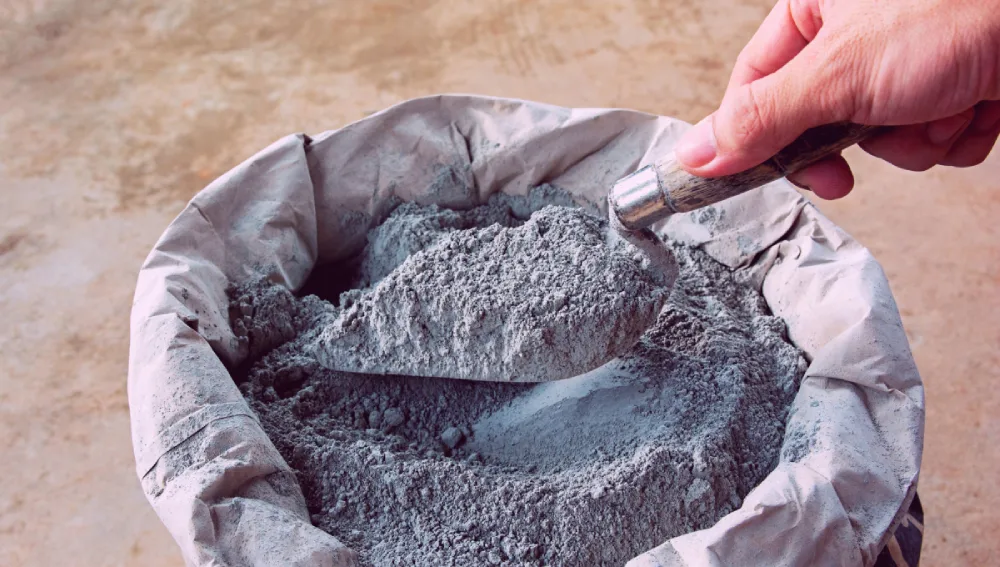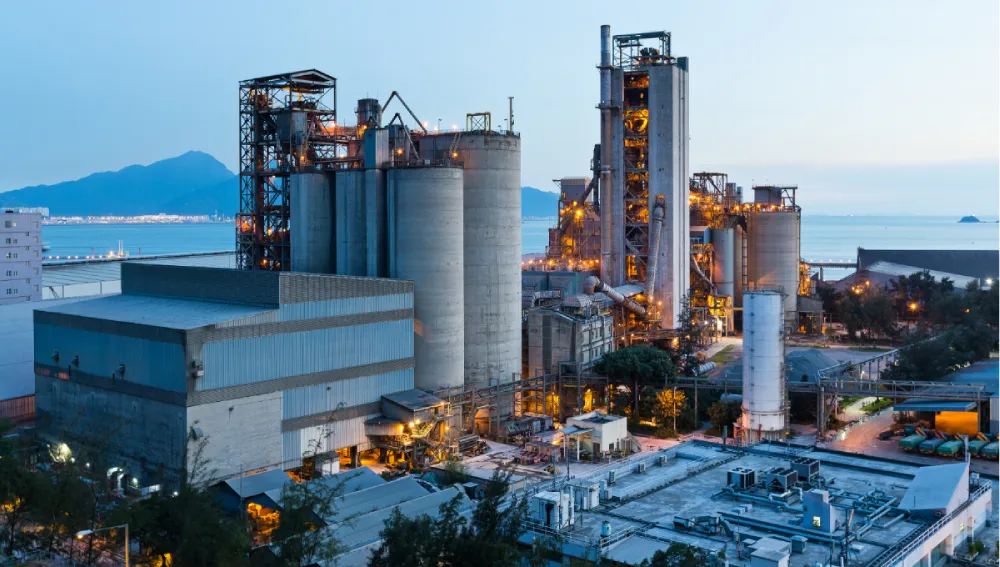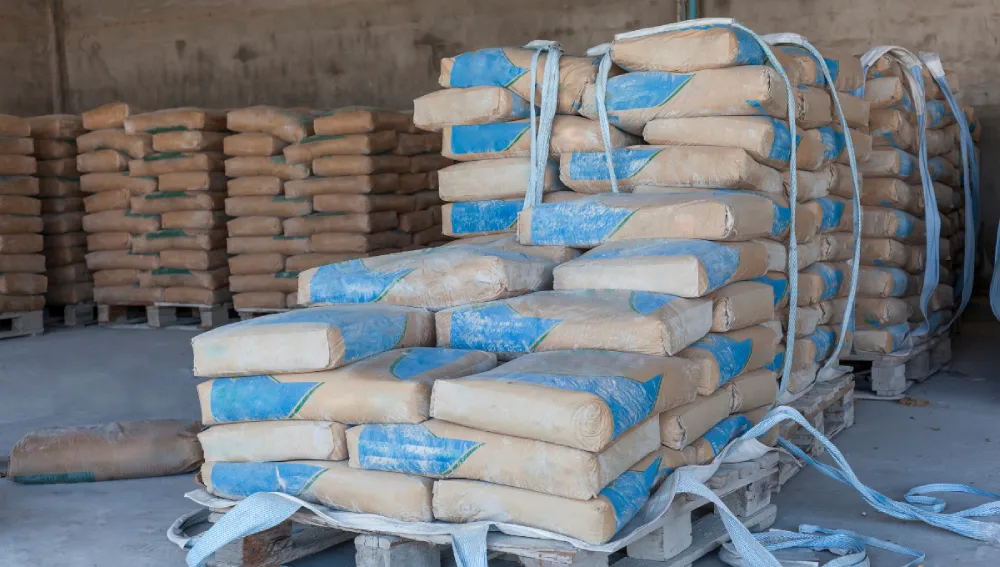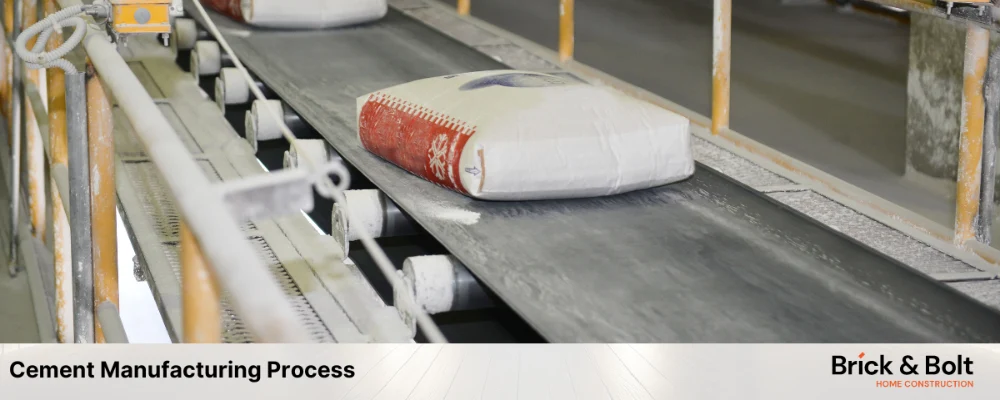Cement is one of the most widely used materials in the construction industry worldwide. Most building projects utilize cement in one or the other form, including concrete, mortar, and flooring. This blog provides a comprehensive guide on the step-by-step manufacturing process of this crucial element. Read on to learn more about it.
What is Cement?

Cement is a fine, powdery substance that plays an important role in construction. It acts as a paste when mixed with water, becoming quick-drying and taking some time to harden and develop its strength. This makes it an essential component in building structures like houses, bridges, and roads. The cement generally adopted and used widely for building is known as Portland cement. The name is so derived because the color of this cement resembles the Portland stone, a type of building stone quarried in England.
Cement Production Raw Materials
Cement manufacturing is an industry that involves several steps, including the gathering of raw materials. These raw materials are necessary to enhance the strength together with the ability to make cement hard.
The major raw materials for producing cement are:
1. Limestone (CaCO₃): This is the major raw material in this mix as it provides the calcium content to the mix.
2. Clay: Comprised of silica (SiO₂), alumina (AL ₂O₃), and iron oxide (Fe₂O₃).
3. Gypsum (CaSO₄·2H₂O): It is added to regulate the rate at which the cements start hardening.
These raw materials are blended in definite quantities to obtain a uniform and homogeneous raw mix which is very crucial in the production of good quality cement.
The Manufacturing Process of Cement

Now, let’s explore the steps involved in the cement production process in more detail:
1. Mining and Crushing
The process of making cement begins with mining, where raw materials are extracted from quarries. Huge machines called excavators dig the limestone out of the earth. The extracted limestone is then taken through a crushing plant, which reduces the size to smaller pieces of about 5 inches in size. This is important because small pieces are easier to handle and process during subsequent stages.
2. Raw material grinding
After crushing, the raw materials are carried to a grinding mill and made into a fine powder. This is done using equipment such as ball mills or vertical roller mills. The grinding process ensures the correct particle size of raw material and its homogeneous constitution, which is so critical for product quality.
3. Blending
The ground raw material, now very fine, is stored in silos where the process of blending takes place. Blending involves inducing compressed air into the raw materials, which undergo agitation and circulation in the silos. Slight changes in the chemical composition might alter the quality of the cement produced, so careful control is necessary. Leading technology is employed in modern cement plants to keep an eye on and make adjustments to the blending process to achieve the right chemical balance.
4. Preheating or Precalcining
The raw material is preheated in a high structure known as a preheater tower before it gets into the kiln. The preheater tower accommodates several cyclones through which the raw material is driven. During the raw materials’ course through the cyclones, it is heated by ascending hot gases to a temperature of about 900°C and calcination takes place. Calcination is the chemical reaction of limestone to convert it into limes and carbon dioxide.
5. Clinker Formation in the Kiln
The kiln is a huge cylindrical furnace placed on a slope and rotating slowly. These furnaces are as long as 60 meters in length. The preheated raw material enters the kiln at 1400-1450°C and goes through a series of chemical transformations. The net effect of these chemical reactions is the formation of small hard lumpy structures which are referred to as the clinker and these look like black marble balls. Clinker a principal component of cement.
The kiln reactions from the following compounds:
- Tricalcium silicate (C₃S): this compound gives strength to the cement and hardening properties.
- Dicalcium silicate (C₂S): Strengthens cement hardening over time.
- (C₃A) Tricalcium aluminate: regulates cement setting time.
- Tetracalcium aluminoferrite (C4AF) – It gives color and also enhances the strength that cement reaches.
6. Cooling
On formation, the clinker must be cooled as fast as possible to retain its properties. Passing the hot clinkers through a clinker cooler, air is blown across it to reduce the temperature to about 100°C. Rapid cooling prevents additional chemical reactions that could take place in the clinker. It is stored in silos until the next process.
7. Clinker Grinding
The next step will be to grind the clinker because now it has lowered in temperature. This is done inside a ball mill where it is further mixed with a small proportion of Gypsum. Gypsum is important because it acts as a regulator of the cement’s setting time and prevents it from early hardening after the addition of water.
The ball mill pulverizes the clinker and gypsum into a fine powder. The last product is of controlled particle size and determinant of the cement quality and performance.
8. Packing and Distribution

Packaging and distribution are the last processes involved in producing cement, which is either bulk-packed or stored in silos and is ready for delivery to its destination on a construction site. From here, it is used in various applications, including in the production of concrete, mortar, and other building materials.
Conclusion
Cement manufacture is a multistep process that converts simple raw materials into what is probably the most vital building ingredient. All of these steps are equally important and need careful control to ensure cement quality and durability.
FAQ:
The principal component in cement is limestone: CaCO₃, a source of calcium. Other very important components include clays with silica, alumina, and iron, along with gypsum to help control the setting time of the cement.
In the preparation of clinker in the kiln, calcination is a crucial step in raw material production. The process involves heating limestone to about 900 degrees Celsius in a preheater tower until it breaks down into lime and CO2.
Gypsum added during final grinding serves to control the setting time of the cement. Without gypsum, the cement will set too fast, making it quite difficult to work with during construction.

